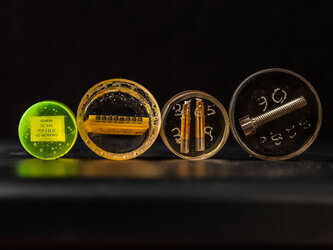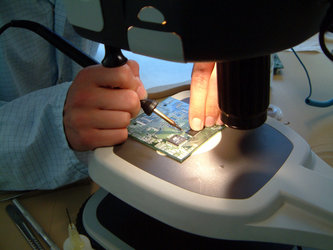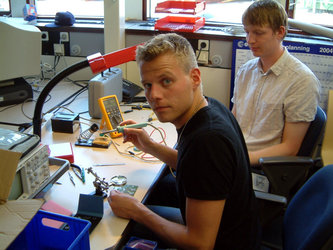Accept all cookies Accept only essential cookies See our Cookie Notice

About ESA
The European Space Agency (ESA) is Europe’s gateway to space. Its mission is to shape the development of Europe’s space capability and ensure that investment in space continues to deliver benefits to the citizens of Europe and the world.
Highlights
ESA - United space in Europe
This is ESA ESA facts Member States & Cooperating States Funding Director General Top management For Member State Delegations European vision European Space Policy ESA & EU Space Councils Responsibility & Sustainability Annual Report Calendar of meetings Corporate newsEstablishments & sites
ESA Headquarters ESA ESTEC ESA ESOC ESA ESRIN ESA EAC ESA ESAC Europe's Spaceport ESA ESEC ESA ECSAT Brussels Office Washington OfficeWorking with ESA
Business with ESA ESA Commercialisation Gateway Law at ESA Careers Cyber resilience at ESA IT at ESA Newsroom Partnerships Merchandising Licence Education Open Space Innovation Platform Integrity and Reporting Administrative Tribunal Health and SafetyMore about ESA
History ESA Historical Archives Exhibitions Publications Art & Culture ESA Merchandise Kids Diversity ESA Brand Centre ESA ChampionsLatest
Space in Member States
Find out more about space activities in our 23 Member States, and understand how ESA works together with their national agencies, institutions and organisations.
Science & Exploration
Exploring our Solar System and unlocking the secrets of the Universe
Go to topicAstronauts
Missions
Juice Euclid Webb Solar Orbiter BepiColombo Gaia ExoMars Cheops Exoplanet missions More missionsActivities
International Space Station Orion service module Gateway Concordia Caves & Pangaea BenefitsLatest
Space Safety
Protecting life and infrastructure on Earth and in orbit
Go to topicAsteroids
Asteroids and Planetary Defence Asteroid danger explained Flyeye telescope: asteroid detection Hera mission: asteroid deflection Near-Earth Object Coordination CentreSpace junk
About space debris Space debris by the numbers Space Environment Report In space refuelling, refurbishing and removingSafety from space
Clean Space ecodesign Zero Debris Technologies Space for Earth Supporting Sustainable DevelopmentLatest
Applications
Using space to benefit citizens and meet future challenges on Earth
Go to topicObserving the Earth
Observing the Earth Future EO Copernicus Meteorology Space for our climate Satellite missionsCommercialisation
ESA Commercialisation Gateway Open Space Innovation Platform Business Incubation ESA Space SolutionsLatest
Enabling & Support
Making space accessible and developing the technologies for the future
Go to topicBuilding missions
Space Engineering and Technology Test centre Laboratories Concurrent Design Facility Preparing for the future Shaping the Future Discovery and Preparation Advanced Concepts TeamSpace transportation
Space Transportation Ariane Vega Space Rider Future space transportation Boost! Europe's Spaceport Launches from Europe's Spaceport from 2012Latest

Tin whisker
Thank you for liking
You have already liked this page, you can only like it once!
This may resemble an alien landscape, but it is actually a microscopic view of tin used to solder electronic components. The long shard rising from the surface is a ‘tin whisker’ – a spontaneous outgrowth representing a clear and present danger to space missions.
The phenomenon was first identified within terrestrial electronics, but these whiskers are known to grow rapidly out of pure tin in the weightlessness, vacuum and temperature extremes of space.
Typically, these crystalline filaments are just a few thousands of a millimetre thick, though may extend more than a thousand times further in length. They are electrically conductive and so can threaten catastrophic short circuits: the US Galaxy IV telecommunications satellite was lost due to this issue in 1998.
The traditional method of preventing tin whiskers was to add lead – but lead is toxic, so its use in solder has been phased out through the EU’s Reduction of Hazardous Substances directive. ESA and European space industry have been granted a waiver to continue using tin–lead alloy for solder, but not an indefinite one.
“We’ve been researching alternative methods to arrest the growth of tin whiskers,” explains ESA materials engineer Jussi Hokka. “We’ve investigated a technique called atomic layer deposition, widely used in the semiconductor industry to lay down a metal oxide film just a few nanometres deep.
“Over a time period of up to a year, this application has led to a significant reduction in the number of tin whiskers, although we don’t yet know if this is due to the surface barrier laid down or some factor of the overall process.”
ESA worked with a consortium led by Finnish specialist Picosun, supported by Finnish packaging specialist Poltronic Ltd and Loughborough University in the UK.
Follow-up research is now underway. Success will undoubtedly have wider applications: tin whiskers are also re-emerging as a problem of terrestrial electronics now that pure tin solder is in widespread use.
ESA’s Tommaso Ghidini comments: “Tin whiskers remain in many respects a mysterious metallurgical phenomenon. But if this technique proves to be successful, we could safely use pure tin as a green option, foregoing carcinogenic lead – not only for space but also for automotive, aeronautics and other large industrial domains, while guaranteeing equivalent engineering performance.”
-
CREDIT
ESA -
LICENCE
CC BY-SA 3.0 IGO or ESA Standard Licence
(content can be used under either licence)

Micro-sections of circuit boards

Discs for fault detection

An Italian student prepares components for soldering

Danish student uses a microscope to solder together…















 Germany
Germany
 Austria
Austria
 Belgium
Belgium
 Denmark
Denmark
 Spain
Spain
 Estonia
Estonia
 Finland
Finland
 France
France
 Greece
Greece
 Hungary
Hungary
 Ireland
Ireland
 Italy
Italy
 Luxembourg
Luxembourg
 Norway
Norway
 The Netherlands
The Netherlands
 Poland
Poland
 Portugal
Portugal
 Czechia
Czechia
 Romania
Romania
 United Kingdom
United Kingdom
 Slovenia
Slovenia
 Sweden
Sweden
 Switzerland
Switzerland
























